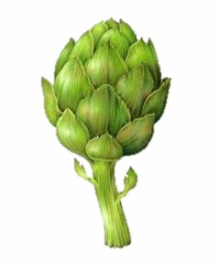 This is a beautiful recipe (adapted from the ocado website) which I love for three reasons. 1. It is super quick, easy and tasty. 2. From a nutritional point of view, its a winner. 3. People don't eat enough artichokes, which are, in my opinion a 'super' food. Artichoke is a great source of vitamin K, vitamin C and folate as well as the minerals calcium, magnesium and potassium. Plus full of fibre. Which we love. It's also full of antioxidants, in fact a study by the American Society for Clinical Nutrition (http://ajcn.nutrition.org/content/84/1/95.abstract), concluded it has a higher antioxidant status than blueberries and dark chocolate! Artichoke also contains constituents which have liver protective qualities. Which lets be honest, at this time of year, when our bodies, immune system and livers get a battering, can only be a good thing! It can increase the production of bile (okay sounds gross but totally necessary) which helps speed up the transit of food through your digestive system, reducing bloating. In fact they were used as a digestive aid in Egyptian times - and of course now we know exactly why. Its also a prebiotic, which feeds the probiotics (or 'good' bacteria) that resides in your stomach. Artichoke is also reported to be beneficial for those with:
Whilst these more serious issues may warrant taking artichoke leaf extract (under the guidance of a doctor or qualified nutritional therapist), eating more artichokes is almost certainly going to be beneficial to health. The heart of the artichoke is eaten because it is softer and the most edible part of the plant. Whilst it would be recommended to buy and prepare your own artichokes, this is, well...hard work to be honest! Buying a jar of artichoke hearts is very acceptable. Make sure it is preserved in olive oil with no / little added salt. So hopefully I have persuaded you about why the artichoke is so great. Here is a wonderful way to serve it at a dinner party, or just smother it on toast or crackers for an incredible health boosting taste sensational snack. This recipe also contains raw garlic (with potential cholesterol lowering, antibacterial, anti-fungal, blood pressure activity) virgin olive oil (with antioxidant, vasodilating, and antiplatelet properties, and potentially cholesterol lowering) and fresh basil (antibacterial, anti-inflammatory and cardiovascular health benefits). So really this is a superfood dip! Serves 2-4. Takes 5 minutes maximum. Ingredients
Instructions In a food processor, blend together all the ingredients. Whizz until smooth. Add a squeeze of lemon juice and top with a little zest before serving with crudités or wholewheat breadsticks. ENJOY!
0 Comments
For years we have been told that skipping breakfast is unacceptable. Now intermittent fasting is all the rage, so confusingly it seems en-vogue to skip breakfast again. So what's the answer? Truth be told, like everything with nutrition, it depends on the person. I personally believe, backed up by scientific studies, that skipping breakfast for most people leads to poor food choices throughout the day and increased calories through the day. (Read here: http://www.ncbi.nlm.nih.gov/pubmed/15699226 & http://www.ncbi.nlm.nih.gov/pubmed/23672851 & http://www.ncbi.nlm.nih.gov/pubmed/11836452?dopt=Abstract) Another mistake commonly made is when people choose overly sweet, sugary breakfasts over healthy, filling breakfasts. A lot of common breakfasts choices are actually akin to eating a dessert first thing in the morning. Packed full of sugar which is going to drive up insulin and lead to cravings mid-morning. If you are trying to lose or even just maintain weight, this isn't going to help. The first meal you eat in a day is most likely going to set your metabolic intentions for the day. If you start off eating rubbish, most likely you will continue this throughout the morning and afternoon. Breakfast is also the meal you are least likely to want to change. If you are someone who DOES eat breakfast regularly and within the first hour of waking, you will most likely reach for something convenient and habitual. Meaning, humans as creatures of habit find it difficult to think about eating something new, first thing. Last week on my Instagram feed (instagram.com/gingerandpicklesnutrition) I recorded seven days of my breakfasts to help people with variety and to try something new, quick and easy. They weren't all perfect, there were a couple of cheat days, but I had something different everyday and tried to make them as protein rich as possible. Protein rich breakfasts have been shown to to reduce down the hunger hormone ghrelin so keep you fuller for longer which means less snacking between meals. Winner. Here are some of the ideas you could try at home. Eggs are my go to breakfast most days or else a smoothie but I wanted to try something different everyday to show that variety is possible, easy and delicious.
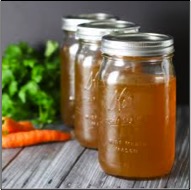 What is bone broth? At this time of year, its a great practice to start making bone broths with leftover bones / carcasses. Bone broth is made by simmering animal bones alongside vegetables, herbs and spices. Delicious, nutrient dense bone broth is very easy and inexpensive to make. Many cultures have used bone broth for centuries as both an inexpensive food source and a traditional medicine. It has long been valued as a tonic for the common cold, joint conditions and digestive disorders. Why is bone broth so good? The bones used to make broth house a variety of powerful nutrients that are released when they are slowly simmered in water. Bone broth is a rich source of minerals, trace minerals, gelatin and amino acids in a form our bodies can easily absorb and use. These nutrients supply the body with the raw materials needed to build strong and healthy cells throughout the body. Bone broth contains calcium, magnesium and phosphorus which support bone and tooth health. The collagen content of bone broth supports the health of joints, hair, skin and nails. Collagen from the bones is broken down during the cooking process into another protein called gelatin. The gelatin in bone broth works to support and repair the lining of the gut. Certain compounds (chondroitin sulfate and glucosamine) extracted into the broth from cartilage tissue help to reduce joint pain and inflammation, whilst stimulating the growth of new collagen. The amino acids found in bone broths support detoxification and collagen production (important in wound healing). They also suppress inflammation, an important consideration for those with chronic inflammation or auto-immune conditions. Health benefits
What bones can be used? Bone broth can be made from the bones of beef, pork, lamb, poultry, wild game and/or fish. When selecting bones to make broth from, it is preferable to use organic, grass-fed animals or wild-caught fish. Bones from conventionally raised animals may contain many harmful substances that can leach into the broth. Ingredients: 2-3kg beef/lamb bones, poultry carcasses Large splash of apple cider vinegar or fresh lemon juice (helps with extraction of minerals from the bones) 2 handfuls of onions, celery, leeks 1 tbsp black peppercorns 2-3 dried bay leaves Recipe: Put all the ingredients in a large stainless steel / ceramic cooking pot and cover with cold water. The water should cover the bones by approx.. 5cm with some room at the top of the pan. Bring to the boil with a lid on, then simmer for the required time, whilst skimming off foam from the top. Strain the liquid (use a fine mesh strainer for poultry) and use immediately or leave to cool. Bone broth can keep for several days in the fridge if left undisturbed. Notes: You can use a slow cooker on high for 12+ hours or a pressure cooker for 3+ hours. If freezing it is best to use glass containers and leave room for expansion. Chicken / turkey should cook for 6-12 hours Beef / lamb can cook for 24 hours until bones look bleached. If using fish 8 hours is the best cooking time. The longer the bones simmer, the more nutrients released. Sources used: Hemsley, J; Hemsley M. The Art of Eating Well (2010); http://articles.mercola.com/sites/articles/archive/2013/12/16/bone-broth-benefits.aspx; http://www.westonaprice.org/health-topics/broth-is-beautiful/ |
AuthorLouise Cullen Archives
October 2020
Categories
All
|
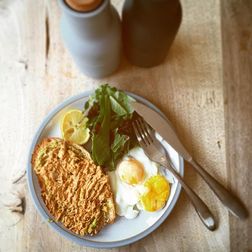
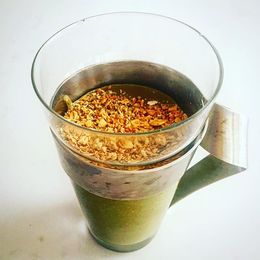
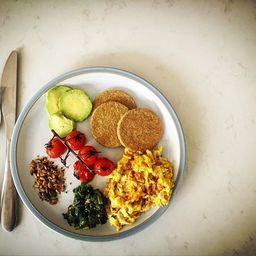
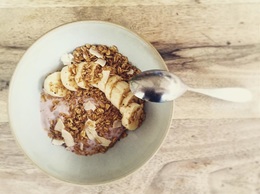

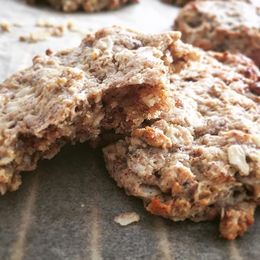

 RSS Feed
RSS Feed
